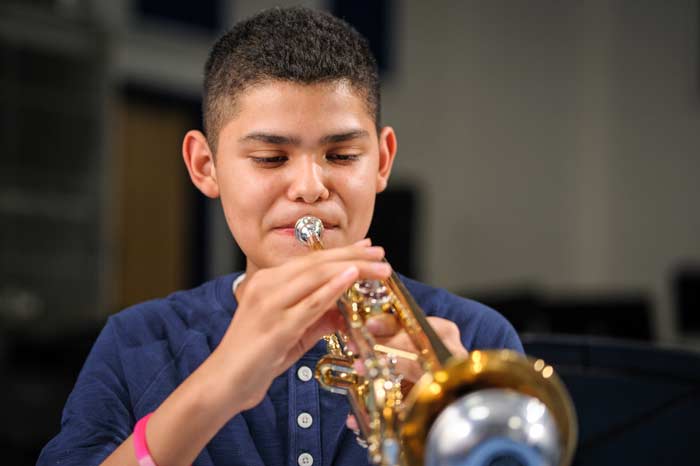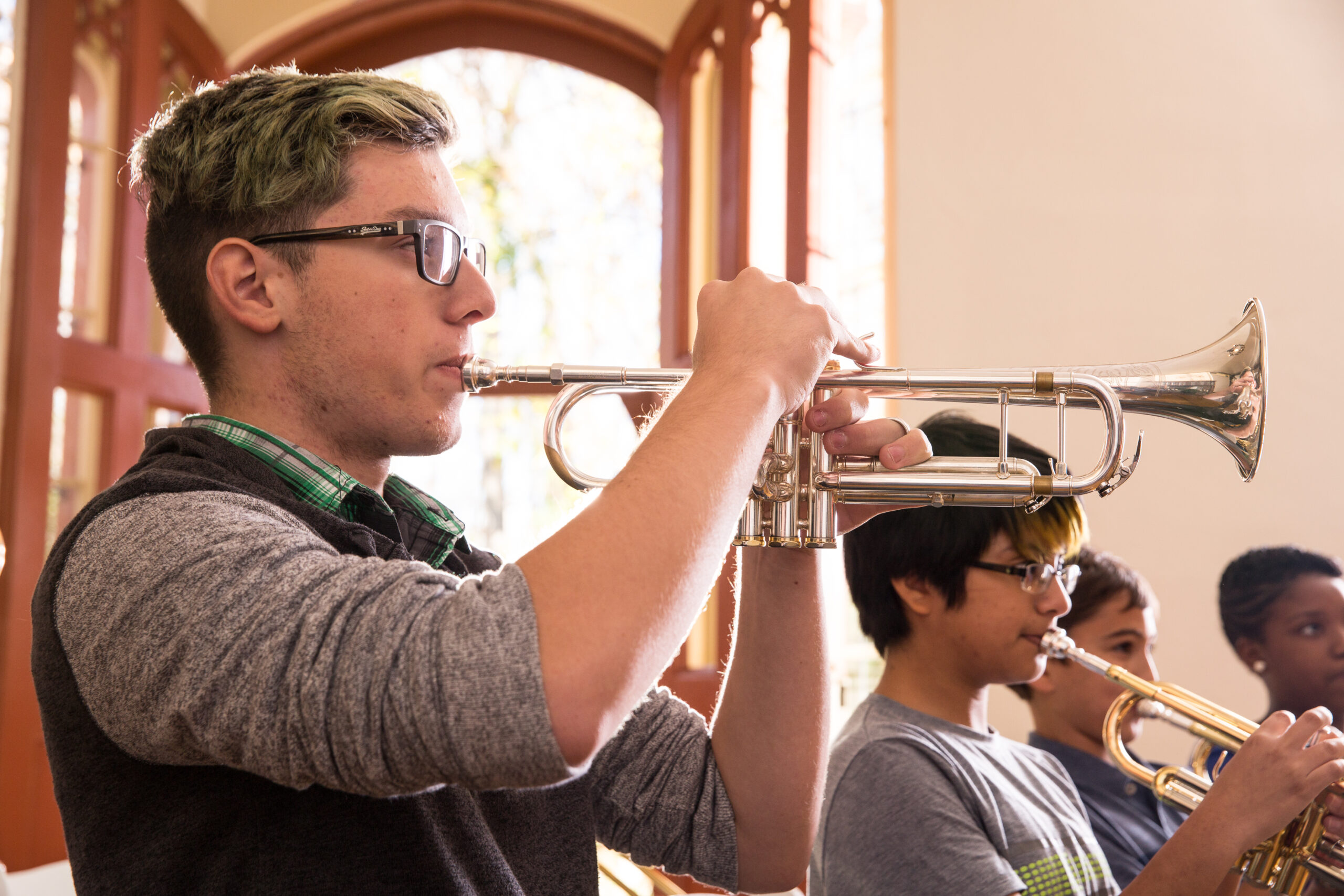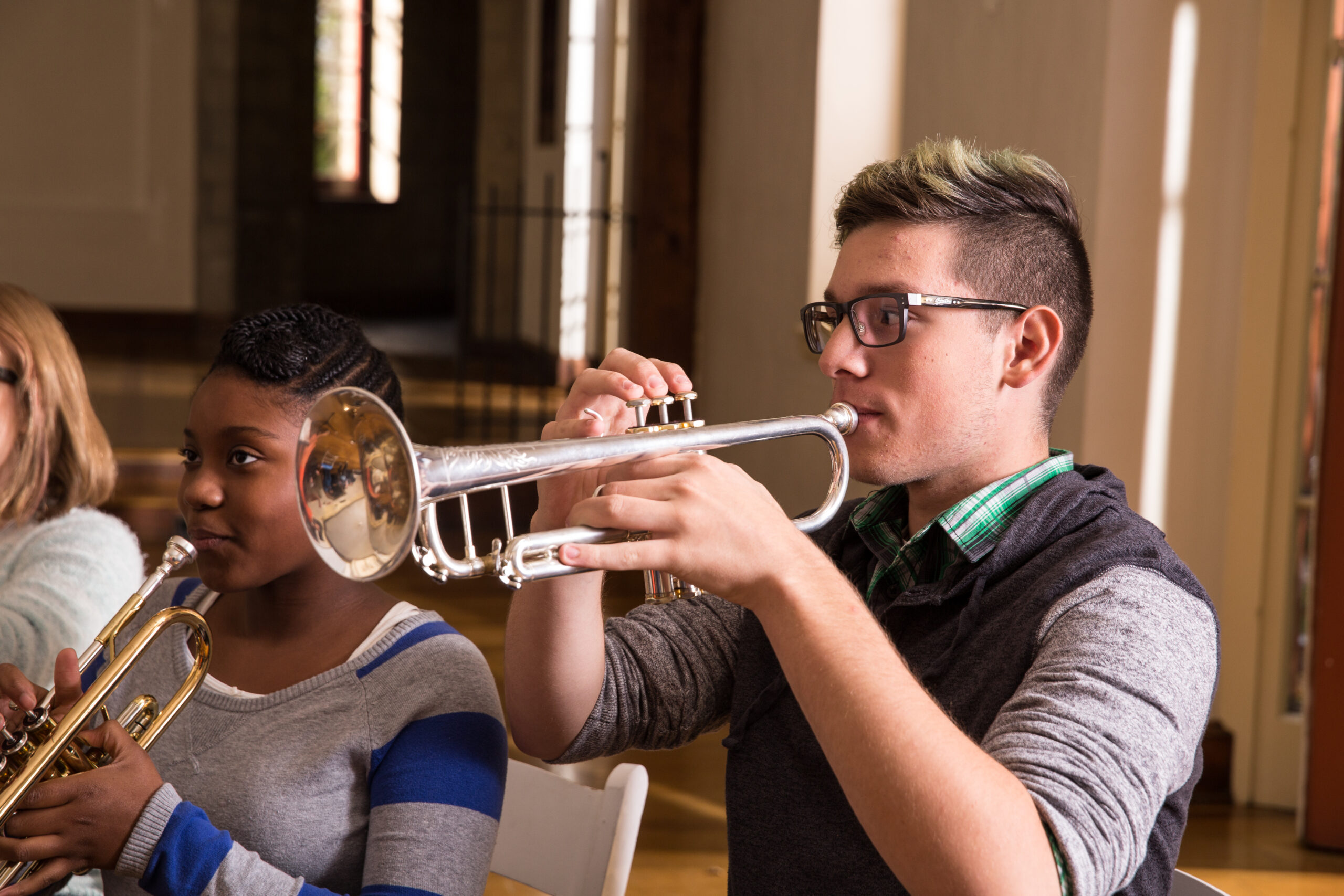July 28, 2015
Trombone vs. Trumpet: What Makes Them Different
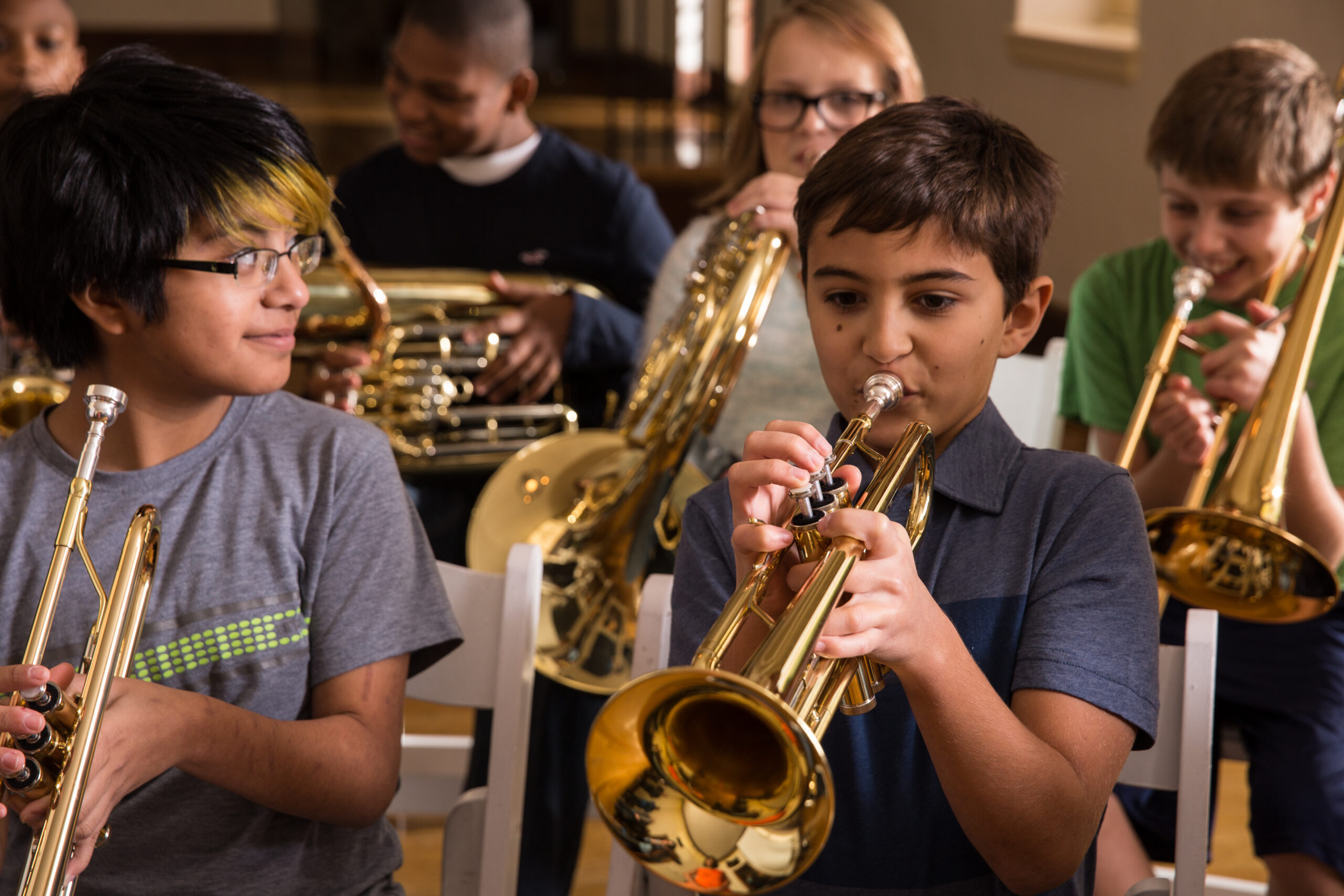

Even if your child isn’t learning how to play the trombone or trumpet from a professional band or orchestra teacher, you may still be curious about the key differences between the two instruments. Although they both belong to the brass family of instruments and are often featured side by side in marching bands and musical compositions, there are quite a few differences between the trombone and trumpet. From overall tone quality to size, here’s a little more information about what sets the two instruments apart.
Size
You may notice that the trombone isn’t as popular as the trumpet among beginners and smaller children, and their larger size is usually the reason why. The trombone is bulkier, making it a little more difficult to play than the trumpet, especially for those who have never played a brass instrument before. Behind the cornet, the trumpet is the smallest of all brass instruments, making it easier to hold, play, and transport to and from lessons. Trombones set themselves apart from all other brass instruments in that they feature a long, distinct slide component, which is yet another distinguishing difference between the two.


The Yamaha YTR-2330 is the latest version of Yamaha’s main student trumpet, an instrument that has assisted in the development of thousands of trumpeters all over the world. Two-piece bell of the YTR-2330 is crafted using state-of-the-art production methods, delivering a consistent, vibrant tone. Learn More
Slide vs. Valve
Rather than valves or keys that are pushed with the tips of the fingers, the trombone uses a slide to change pitches. Since the slide is easy to spot, this is an easy way to visually spot a trombone in a line-up of different brass instruments. Valves on a trumpet are manipulated with the first three fingers of the right hand, while the left hand is used to grip the instrument around the valves. Similar to the trumpet valves, the slide on a trombone is held and adjusted with the right hand while the left hand holds in the instrument steady. In some cases, certain trombone models feature an extra valve that can be operated with a single finger on the left hand while still allowing the left hand to hold the instrument tightly.
Pitch and Clef
Unlike the French horn and the trumpet, the trombone is considered a low brass instrument. All professional band and orchestra music that’s written for the trombone is written in the bass clef, as opposed to the higher treble clef that’s read by the higher instruments. If you live in the U.K., trombone parts are noted in the treble clef and sound an octave and major second lower than notated. The trombone is the only brass instrument that’s notated in the bass clef, making it difficult for many musicians to transition between the trombone and other brass instruments. Since the trombone is a low brass instrument, the pitch is significantly lower than that of the trumpet.
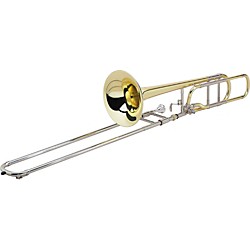

The Allora line is an excellent choice for students selecting their first horn. You could get a used name brand horn, but young players are sensitive about playing a tarnished, dented horn when they are in a line of kids who have shiny instruments. Learn More
Maintenance
Although the trumpet and trombone are easier to care for than most professional band or orchestra instruments, trombones are generally a little more difficult to care for than trumpets. In order to properly maintain a trumpet, the valves should be regularly oiled and the instrument should be wiped down after each use. Similarly, the slide and tuning slide on a trombone should be oiled regularly. Unfortunately, even the slightest dent or bend in the slide can render the entire instrument unplayable. To prevent this misfortune, some trombonists leave the routine maintenance to the professionals.
Embouchure
Many who are familiar with brass instruments believe that, since the trumpet requires a more focused embouchure than the trombone, the trumpet requires more strength to play. This is false, as the trumpet simply requires a different kind of strength. Whether your child is playing the trombone or the trumpet, doing so requires finding the right balance of air and chop. When it comes to embouchure, trumpet embouchure requires greater balance and control, since the changes in airflow occur in a very small rim and cup when compared to the trombone. For some, playing the trombone may feel more natural in their facial structure and breathing style, while others will feel more comfortable playing the trumpet.
Demand
Since the trumpet is far more popular than the trombone, the demand for professional trombone players is, as a result, higher. If your child seems serious about playing an instrument and has expressed an interest in playing professionally, the trombone may be the better choice, as they’ll have more options to play on a professional level later in life. Those who know how to play both instruments tend to think that the trumpet is easier to learn, but enjoy playing the trombone because of the sheer amount of playing opportunities available to them. From ska bands to professional marching bands, trombonists are almost always in demand.
For more information about caring for your trumpet or trombone, check out Caring for Your Brass Instrument.




